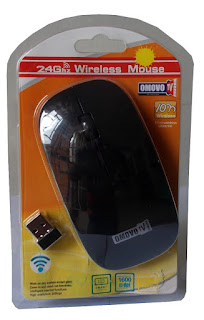1927 Newspaper article announcing advent of Television
Television has been a staple in the lives of the majority of people for over 100 years, speedily overtaking radio as the main source of news and entertainment worldwide. Let's take a quick look at how TV has evolved over the years.
BLACK-AND-WHITE TELEVISION
Televisions first became commercially available in most parts of the world in black-and-white. The first TV stations broadcast programming without colour, and from 1936 to 1967, most people only had black-and-white TVs. Interestingly, the one exception is South Africa - where the first TV station in the country began its service in 1975 with fully colour broadcasts.
While black-and-white was the more commercially available type of TV, various companies were working on reinventing the available technology to revolutionise entertainment.
COLOUR TELEVISION
Even with colour technology, TVs were still bulky
The revolution took some time though, the technology to transmit colour images had been available since 1908 when inventor Hovannes Adamian patented the first colour television project. Many inventors worked for decades on creating more practical designs and by 1953, colour televisions became available in the United States. However, these first colour TVs were very expensive, and most stations were still broadcasting in black-and-white, making colour TV a luxury that most people could not justify purchasing.
In the meantime, film makers were taking advantage of the new colour technology to create full colour films that drew multitudes to cinemas. Cinema-goers raved over colour and were eager for more colour TV programming.
TV stations began broadcasting in colour, phasing out black-and-white TV
The popularity of colour films sped up the revolution from black-and-white to colour television. More and more stations began broadcasting in colour, making it more practical to purchase a colour TV, and by the 1980s black-and-white TV transmissions were a thing of the past.
As time went on, more people switched to colour televisions at home, however, there was a new revolution coming. Inventors were researching and developing more compact display methods with the aim of increasing screen size and bringing home the cinema experience.
LCD, LED AND PLASMA TELEVISIONS
Flat panel televisions greatly minimised space requirements and maximised screen sizes
The early black-and-white and colour televisions were extremely bulky, the Cathode Ray Tube (CRT) technology on which they were designed required a lot of space, making it difficult to increase the size of your TV screen without occupying a large portion of your home.
As early as 1964, LCD and Plasma televisions had been built by different inventors and by 1977 the first LED television was developed by J.P. Mitchell. Soon corporations like Sharp, started to mass produce televisions using this technology. The Crystaltron from Sharp was launched in 1988, as the first LCD television.
As competition picked up, and more companies started to produce their own flat-panel display models, CRT televisions were made obsolete. However, as history always proves, progress never ends and a new revolution is at hand.
SMART TELEVISION
Like smartphones, Smart TVs allow you to access internet content on your TV
As computing systems evolved, technology innovators have found new ways to deliver advanced computing technology in different packages. The television is no exception. As early as 1994, a patent was filed for a smart TV predecessor that would be linked with data processing systems. Now in 2017, every major electronics manufacturer has a Smart TV brand on the market. The advantage of this new widely available technology is the ability to access the internet from your television.
At this point, Smart TVs are still quite expensive, and are yet to overtake LED televisions in sales. It appears that we are now standing at the edge of another revolution in TV. Will Smart TVs become the new household staple, making regular LED TVs obsolete?
If you have any additions to our brief history of television, share them in the comments.
Are you one of the many consumers who want a Smart TV, but can't justify the purchase due to the high costs? Why not try the Omovo TV Hybrid Entertainment Box? It features a Quad-Core 1.5G Processor, and easily connects to your regular TV via HDMI or AV cables to effectively transform it into a Smart TV.

































